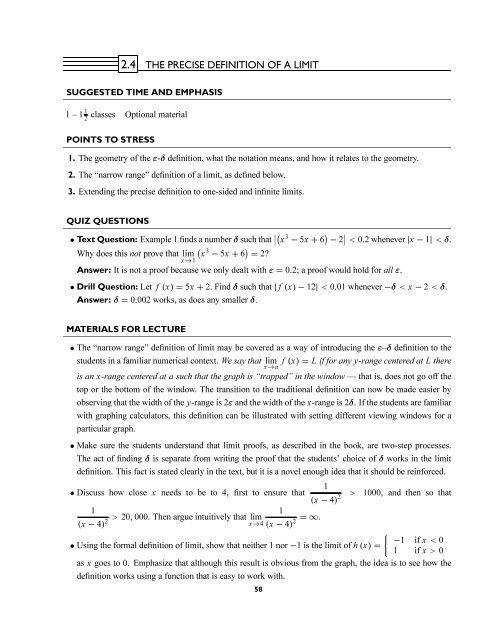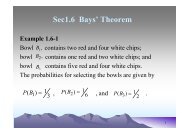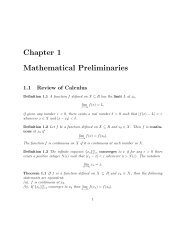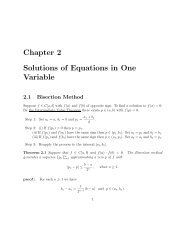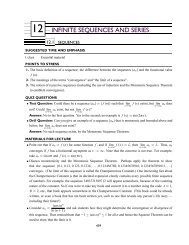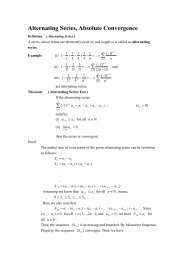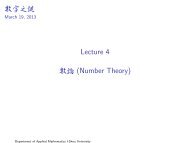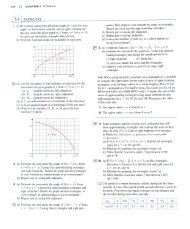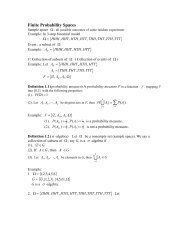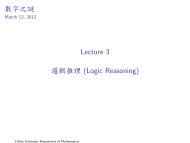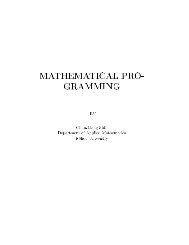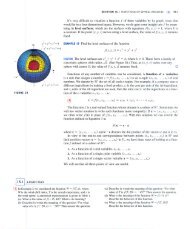2 LIMITS
2 LIMITS
2 LIMITS
You also want an ePaper? Increase the reach of your titles
YUMPU automatically turns print PDFs into web optimized ePapers that Google loves.
2.4 THE PRECISE DEFINITION OF A <strong>LIMITS</strong>UGGESTED TIME AND EMPHASIS1–1 1 2classes Optional materialPOINTS TO STRESS1. The geometry of the ε-δ definition, what the notation means, and how it relates to the geometry.2. The “narrow range” definition of a limit, as defined below.3. Extending the precise definition to one-sided and infinite limits.QUIZ QUESTIONS• Text Question: Example 1 finds a number δ such that ∣ ( x 3 − 5x + 6 ) − 2 ∣ < 0.2 whenever |x − 1| < δ.(Why does this not prove that lim x 3 − 5x + 6 ) = 2?x→1Answer: It is not a proof because we only dealt with ε = 0.2; a proof would hold for all ε.• Drill Question: Let f (x) = 5x + 2. Find δ such that | f (x) − 12| < 0.01 whenever −δ < x − 2 < δ.Answer: δ = 0.002 works, as does any smaller δ.MATERIALS FOR LECTURE• The “narrow range” definition of limit may be covered as a way of introducing the ε–δ definition to thestudents in a familiar numerical context. We say that lim f (x) = L if for any y-range centered at L therex→ais an x-range centered at a such that the graph is “trapped” in the window — that is, does not go off thetop or the bottom of the window. The transition to the traditional definition can now be made easier byobserving that the width of the y-range is 2ε andthewidthofthex-range is 2δ. If the students are familiarwith graphing calculators, this definition can be illustrated with setting different viewing windows for aparticular graph.• Make sure the students understand that limit proofs, as described in the book, are two-step processes.The act of finding δ is separate from writing the proof that the students’ choice of δ works in the limitdefinition. This fact is stated clearly in the text, but it is a novel enough idea that it should be reinforced.1• Discuss how close x needs to be to 4, first to ensure that(x − 4) 2 > 1000, and then so that11> 20, 000. Then argue intuitively that lim2(x − 4) x→4 (x − 4) 2 =∞.{ −1 if x < 0• Using the formal definition of limit, show that neither 1 nor −1 is the limit of h (x) =1 if x > 0as x goes to 0. Emphasize that although this result is obvious from the graph, the idea is to see how thedefinition works using a function that is easy to work with.58


